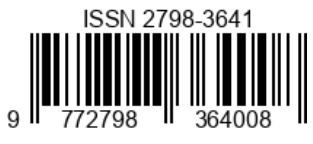REMODELLING MUSHARAKAH MUTANAQISHAH CONCEPT: CASE HOME EQUITY REFINANCING
DOI:
https://doi.org/10.53625/jirk.v4i11.10089Keywords:
Musharakah Mutanaqishoh, Islamic Finance, Home EquityAbstract
This paper aims to remodel musharakah Mutanaqishah to transform your home equity into real wealth without taking on debt and riba-free, compared with the existing Musharakah Mutanaqishah (MMQ) in the Islamic Financial Institution (IFI) model. This study uses secondary data and Islamic literature. We use simulation data to explain the proposed model. The calculation will be based on the risk-adjusted cost of capital for the capital eligible to finance. The results show that this proposed model through Islamic Finance can be an alternative financing method due to its ease and reliability, especially for Islamic fintech, which has a different business model from banking
References
Ayu Effendi, K., & Wahju Widajatun, V. (2024). Growth of Islamic Fintech in Indonesia. Journal of Economics, Finance and Management Studies, 07(06), 3620–3631. https://doi.org/10.47191/jefms/v7-i6-53
Baroroh, H. (2023). Activity Diversification, Performance, And Profitability In Islamic Banking. Jurnal Ilmiah Ekonomi Islam, 9(2), 1920. https://doi.org/10.29040/jiei.v9i2.8098
Fikri, A. A. H. S., Mustofa, M., Sholeh, M., & Nikensari, S. I. (2023). The Analysis of Residential Property Price Bubble and Sharia Bank Financing Using MIDAS Regression Model. International Finance and Banking, 10(1), 20. https://doi.org/10.5296/ifb.v10i1.20893
Gani, A. A. (2023). Transformation from Conventional Economics to Sharia Economics: A Conceptual Analysis. Endless: International Journal of Future Studies, 6(3), 44–57. https://doi.org/10.54783/endlessjournal.v6i3.199
Hambali, A., & Adhariani, D. (2023). Sustainability performance at stake during the COVID-19 pandemic? Evidence from Sharia-compliant companies in emerging markets. Journal of Islamic Accounting and Business Research, 14(1), 80–99. https://doi.org/10.1108/JIABR-01-2022-0014
ʻĀbidīn, M. A. U. I., & Ḥaṣkafī, M. A. (2011). Hashiyat ibn ’Abidin: radd al-muhtar ’ala al-Durr al-mukhtar. Dar al-Ma’rifah. https://books.google.co.id/books?id=F7ZvswEACAAJ
Imani, A. A., & Hikmah, Y. (2022). Experience Study: Effect of Underwriting Methods on Mortality Rate for Life Insurance Product At Pt. ABC (2015-2020 Period). BAREKENG: Jurnal Ilmu Matematika Dan Terapan, 16(1), 031–040. https://doi.org/10.30598/barekengvol16iss1pp031-040
IQBAL, M., NADYA, P., & SARİPUDİN, S. (2021). Islamic Fintech Growth Prospects in Accelerating MSMEs Growth: Evidence in Indonesia. International Journal of Islamic Economics and Finance Studies, 126–140. https://doi.org/10.25272/ijisef.857488
Ismamudi, I., Alcoriza, G. B., Marzuki, M., & Bani, M. (2023). Islamic Fintech and Financial Inclusion: Innovations for Sustainable Economic Empowerment. DEAL: International Journal of Economics and Business, 1(01), 54–60. https://doi.org/10.37366/deal.v1i01.3303
Jiang, W., & Martek, I. (2024). Strategies for managing the political risk of investing in infrastructure projects in developing countries. Engineering, Construction and Architectural Management, 31(10), 4079–4098. https://doi.org/10.1108/ECAM-12-2021-1072
Kulmie, D. A., & Omar, M. M. (2024). The impact of participatory Islamic finance on Shari’ah banks’ profitability. Asian Economic and Financial Review, 14(7), 482–496. https://doi.org/10.55493/5002.v14i7.5083
Mardhiyaturrositaningsih. (2022). Financing Risk in Islamic Banking Before and During the Covid-19 Pandemic. Jurnal Ekonomi Syariah, Akuntansi Dan Perbankan (JESKaPe), 6(2), 303–316. https://doi.org/10.52490/jeskape.v6i2.936
Miah, M. D., & Suzuki, Y. (2020). Murabaha syndrome of Islamic banks: a paradox or product of the system? Journal of Islamic Accounting and Business Research, 11(7), 1363–1378. https://doi.org/10.1108/JIABR-05-2018-0067
Musthafa, T. F., Triyuwono, I., & Adib, N. (2020). Application of Asset Revaluation By the Public Assessment Office: a Reflection of Sharia Accounting, Shari’Ah Enterprise Theory. International Journal of Economics, Business and Accounting Research (IJEBAR), 4(03), 16–26. https://doi.org/10.29040/ijebar.v4i03.1281
Pemerintah Republik Indonesia. (2004). Undang-Undang Republik Indonesia Nomor 5 Tahun 1960 Tentang Peraturan Dasar Pokok-Pokok Agraria. Undang-Undang No.5 Tahun 1960, 1, 1–5.
Putri, V. A., & Akbary, N. M. M. (2021). Islamic Fintech and Indonesian MSMEs during the Pandemic. Sebelas Maret Business Review, 6(2), 111. https://doi.org/10.20961/smbr.v6i2.56063
Qudamah, A. A. A. I. (2007). Al Mughni. Dar Arlum Al Kutub. https://books.google.co.id/books?id=0-jAoAEACAAJ
Rabbani, M. R., Bashar, A., Nawaz, N., Karim, S., Ali, M., Rahiman, H. U., & Alam, M. S. (2021). Exploring the Role of Islamic Fintech in Combating the Aftershocks of COVID-19: The Open Social Innovation of the Islamic Financial System. Journal of Open Innovation Technology Market and Complexity, 7(2), 136. https://doi.org/10.3390/joitmc7020136
Ramadhan, F., Setiawan, I., & Marwansyah, M. (2022). Property Industry and Subsidized Housing Respond to Macroeconomic Factors in Indonesia. https://doi.org/10.4108/eai.27-7-2021.2316843
Republik Indonesia. (1997). PP No. 24 Tahun 1997 tentang Pendaftaran Tanah. Icassp, 21(3), 295–316.
Sallemi, N., & Zouari, G. (2024). Effect of external corporate factors on takaful performance. Asian Journal of Accounting Research, 9(3), 217–228. https://doi.org/10.1108/AJAR-10-2023-0336
SEOJK No. 13/SEOJK.03/2017. (2017). Surat Edaran Otoritas Jasa Keuangan No 13/SEOJK.03/2017 tentang Penerapan Tata Kelola Bagi Bank Umum. Otoritas Jasa Keuangan, 31.
Solihah. (2021). Maqashid Sharia in Islamic Economics and Finance Research. Journal of Islamic Economic Literatures, 2(1). https://doi.org/10.58968/jiel.v2i1.31
Suryati, S., & Rizqiana, Z. D. (2024). Detection and forecasting of housing price bubbles in Indonesia, Malaysia, and Singapore. Indonesian Journal of Islamic Economics Research, 5(2), 122–136. https://doi.org/10.18326/ijier.v5i2.9783
Widarjono, A., & Mardhiyah, Z. (2022). Profit-Loss Sharing Financing and Stability of Indonesian Islamic Banking. International Journal of Islamic Business and Economics (IJIBEC), 6(1), 1–16. https://doi.org/10.28918/ijibec.v6i1.4196
Zhu, Z., Kong, L., Aisaiti, G., Song, M., & Mi, Z. (2021). Pricing contract design of a multi-supplier, multi-retailer supply chain in a hybrid electricity market. Industrial Management & Data Systems, 121(7), 1522–1551. https://doi.org/10.1108/IMDS-09-2020-0543
Yusof, R. M., Zainuddin, Z., Musaddad, H. A., Harun, S. L., & Rahim, M. A. A. A. (2023). Democratizing Islamic home financing and reimagining the fractional homeownership model: a conceptual framework via big data and blockchain technology. Journal of Islamic Accounting and Business Research, 16(2), 273-304. https://doi.org/10.1108/jiabr-02-2022-0033













